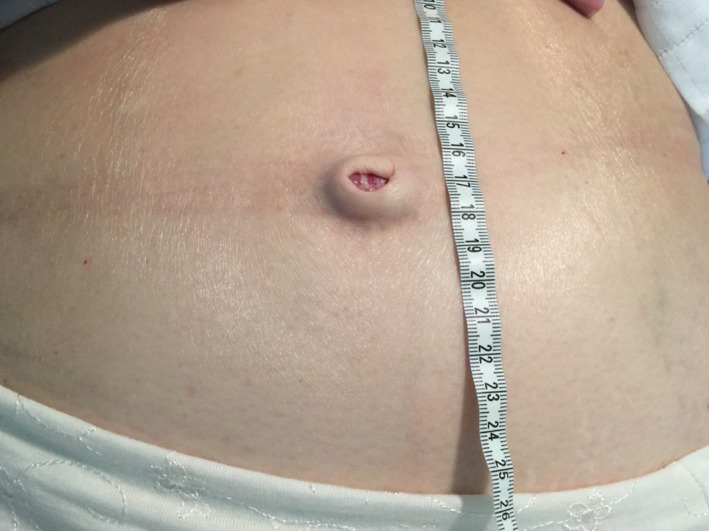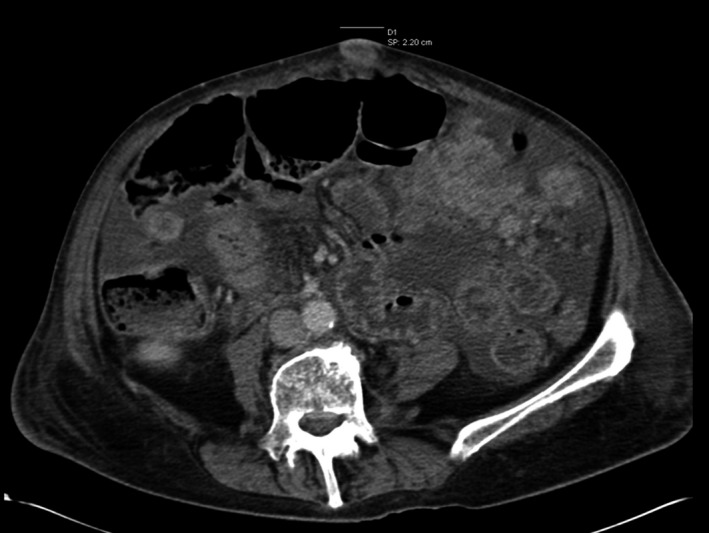Key Clinical Message
Umbilical tumors are relatively rare and can be classified as benign or malignant. The term “Sister Mary Joseph nodule” is used to describe an umbilical neoplasm associated with advanced metastatic intra‐abdominal malignancy. It generally has a poor prognosis.
Keywords: peritoneal carcinomatosis, Sister Mary Joseph nodule, umbilical tumors
Question: What is this condition?
Answer: A 78‐year‐old Caucasian female presented to the ED with worsening lower abdominal pain, lethargy, and weight loss. Clinical examination showed abdominal distention and a firm, nontender, irregular 1 cm nodule within the umbilicus (Fig. 1). Her CT of the abdomen showed a mass lesion at the hepatic flexure of the colon, ascites, and widespread peritoneal carcinomatosis. The nodule at the umbilicus enhances with contrast and radiologically represents a malignant deposit (Fig. 2). Subsequent colonoscopy and tissue biopsy revealed that the mass lesion was adenocarcinoma of the colon.
Figure 1.

The umbilical nodule.
Figure 2.

The cross‐sectional CT image of the umbilicus.
The clinical finding at the umbilicus is known as Sister Mary Joseph nodule. It is a metastatic deposit often as a result of an advanced intra‐abdominal cancer. Gastrointestinal malignancies, commonly gastric, colonic, and pancreatic, account for about half of the underlying sources. Other sources include gynecological, cancer of unknown primary and rarely, urinary and intrathoracic malignancies 1, 2.
Conflict of Interest
None declared.
Clinical Case Reports 2016; 4(2): 214–215
References
- 1. Dubreuil, A. , Dompmartin A., Barjot P., Louvet S., and Leroy D.. 1998. Umbilical metastasis or Sister Mary Joseph's nodule. Int. J. Dermatol. 37:7–13. [DOI] [PubMed] [Google Scholar]
- 2. Galvan, V.G. 1998. Sister Mary Joseph's nodule. Ann. Intern. Med. 128:410. [DOI] [PubMed] [Google Scholar]


